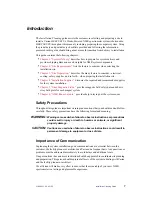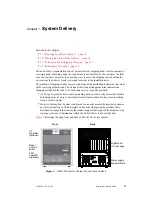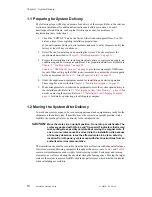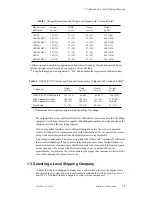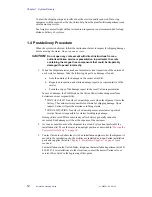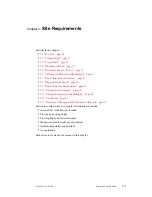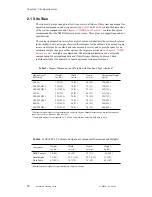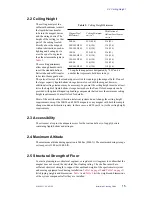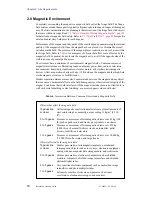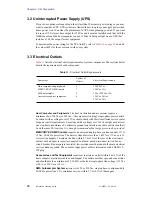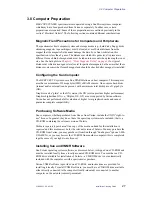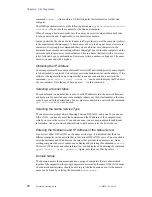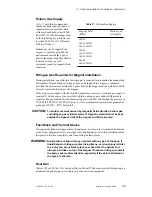
Chapter 2. Site Requirements
18
Installation Planning Guide
01-999021-00 A0100
2.8 Magnetic Environment
Completely surrounding the magnet is a magnetic field called the fringe field. The fringe
field contour around the magnet is typically elliptical-spheroid shaped, longer at the magnet
axis. The first consideration in site planning is the interaction of the fringe field with objects
that come within its range. Read
5.1 “Safety Hazards of Strong Magnetic Fields” page 35
for details about magnetic field safety. Refer to
5.2 “Stray Field Plots” page 36
axial and radial stray field plots for each magnet.
Performance of the magnet and the quality of the results depend on maintaining the internal
quality of the magnetic field. Once the magnet has been placed, it is shimmed for small
variations in the field. The presence of the magnet places restrictions on use of areas within
the fringe field. Refer to
for examples of objects that affect or are affected by the
magnetic field. In general, do not locate the magnet next to a wall if the opposite side of the
wall is an area of general public access.
The site must have a minimum of environmental magnetic fields. Common sources of
magnetic interference are fluctuating loads on adjacent power lines, radio or television
transmissions, heavy-duty transformers, elevator motors, and similar electromagnetic
devices. Allow a separation of at least 4.6 m (15 ft) between the magnet and other high-field
electromagnets, elevators, or forklift trucks.
Similar separation distances must also be maintained between the magnet and any object
that can cause a detrimental effect on the field homogeneity or the structural integrity of the
magnet. Conditions that could interfere with the magnet include (but are not limited to) a
wall with metal sheathing or steel studding, a concrete support column with steel
Objects that affect the magnetic field
15 gauss line
or closer
All ferromagnetic construction materials except small amounts of
steel reinforcing bar, normally not exceeding 11 kg/m
2
(2.5 lb/
ft
2
).
5 to 15 gauss
Presence or movement of ferromagnetic objects over 45 kg (100
lb) such as pushcarts, hand trucks, gas cylinders, and chairs.
2 to 5 gauss
Presence or movement of ferromagnetic objects over 450 kg
(1000 lb) such as small delivery trucks, automobiles, pallet
movers, forklifts, and elevators.
1 to 2 gauss
Presence or movement of ferromagnetic objects over 34,000 kg
(75,000 lb) such as trains, and large trucks.
Objects affected by the magnetic field
15 gauss line
or closer
Cardiac pacemakers, ferromagnetic implants, unrestrained
ferromagnetic objects such as tools, keys, electronic equipment,
analog watches, magnetic data storage media, and credit cards.
5 to 15 gauss
Cardiac pacemakers, electronic equipment such as shielded
monitors, computers, shielded image intensifiers, and shielded
photomultiplier tubes.
2 to 5 gauss
Very sensitive electronic equipment such as unshielded image
intensifiers, and photomultiplier tubes.
1 to 2 gauss
Extremely sensitive electronic equipment such as linear
accelerators, electron microscopes, and monitors.
Table 6. Interaction Between Common Objects and a Magnetic Field




